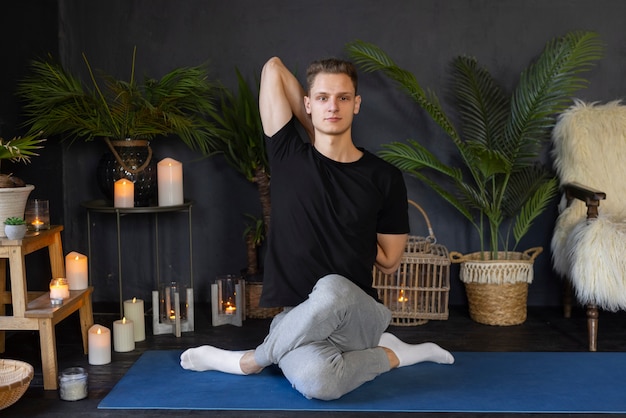

The other night, around 4 AM, I woke up feeling extremely anxious. I had been dreaming about being in a familiar city but not being able to navigate it. The dream wasn’t overly disturbing, but I woke up with intense anxiety—heart racing, dry mouth, and a knotted feeling in my stomach.
I lay awake, trying to figure out if anything in my life was causing such a high level of anxiety, but nothing came to mind. It turned out, I was simply thirsty due to overheating and dehydration during the night. I’ve noticed this before—sometimes my body uses anxiety to wake me up to drink water. While effective, it feels like a harsh way to be woken up.
After drinking a glass of water, I returned to bed but couldn’t fall back asleep because the anxiety was still strong. Such feelings can take a while to dissipate.
Over the years, I’ve tried various ways to handle anxiety. Early on, I learned it’s helpful to shift my focus to bodily sensations and away from anxious thoughts. Paying attention to breathing, especially in the belly, calms and centers the mind. Focusing on sensations low in the body, like feet on the floor or sitting position, has a grounding effect.
While these techniques usually help, they can sometimes feel like attempts to “fight” anxiety, treating it as an enemy to be defeated. This approach isn’t always effective, especially when dealing with severe or long-term anxiety.
A few years back, my life was in constant crisis—issues with the IRS, divorce, debt, housing problems including a short stint of homelessness, cancer, more medical debt, and job insecurity due to technological changes. I realized I needed a more compassionate approach toward myself.
I began practicing turning toward painful feelings rather than trying to suppress them. This method, which I’ve been teaching for years, involves treating anxiety not as an enemy but as a part of ourselves seeking help. The sensations of anxiety serve as a cry for support. Our task is to turn toward these feelings and offer care and compassion.
We should treat our anxiety as we would comfort a scared child or pet. Through kind words, gentle touch (like laying a hand on our heart or belly), and a loving gaze, we can show our anxious self that we are present and caring.
For mild anxiety, it might be fine to distract oneself by focusing on the body. However, offering love and compassion is even better. This approach also works for more intense, long-term anxieties. Lately, I’ve been exploring another method involving a simple question to release anxiety: “Who is anxious?”
This question aims to identify the “Self” experiencing the anxiety. When I do this, I find only ever-changing sensations with nothing solid or permanent. This realization brings a sense of happiness and freedom, often diminishing the anxiety or making it irrelevant.
This practice is well-known, especially in Zen traditions. I’ve struggled with naming it but temporarily settled on “releasing anxiety,” though it could also be called “Zenning the heck out of your anxiety.” The idea is simple questioning leads to enlightenment, as Dogen, the founder of Soto Zen in Japan, indicated.
This question can be applied widely—”Who is upset?” “Who is angry?” “Who desires?” By doing so, we can create a sense of freedom around our painful feelings.
However, it’s important to approach this practice with self-compassion. Lacking compassion in this practice can lead to fear, a loss of meaning, or an inability to feel joy. Balance it with loving-kindness and supportive community connections.
Embracing and offering love to our suffering, similar to how a parent comforts a child, has helped me through many painful experiences, especially unresolved issues from childhood.
I find this practice refreshing and appreciate its power. Thank you for reminding me of this valuable technique.